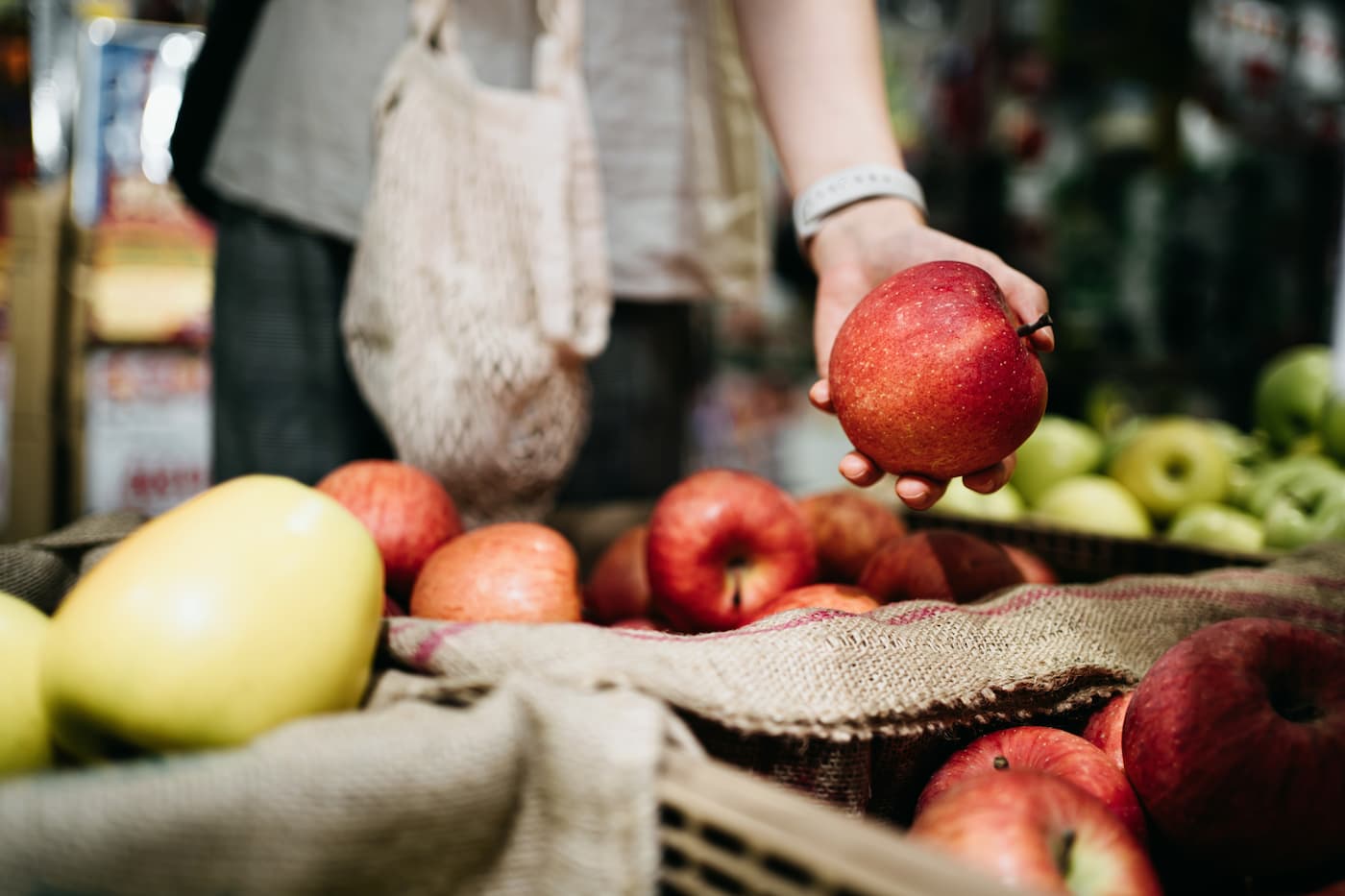How 5 entrepreneurs turn browsers into buyers at farm and artisan markets
Editorial Team
7 min read
Summer can be a highly fruitful time for small businesses: More people out and about in your local community means more opportunities to attract new customers. This is especially true for businesses with a presence at local street fairs and farmers markets.
According to the U.S. Department of Agriculture, farmers markets generate over $2 billion[1] in sales for American farmers. On top of that, they’re a great way to familiarize people with your business and brand.
Getting involved in your local farmers market or street fair means getting real facetime with your potential customers, and engaging on a deep level with your community. Even if you don’t completely sell out your products, being present at a local event can pay off in dividends. Just ask entrepreneurs Pete Larson, Ian Colbeck, Erin Mooney, Kali Dahle, and Toni Lipsey.
These five superstars in the world of farmers markets and craft fairs share the lessons and insights that helped them win loyal customers and become the “it booth” at local events.
Consistency is half the battle
One of the most important keys to success at farmers markets and street fairs is to show up consistently at every farmers market you can. To build a brand you need to show up week after week, year after year.
“If your customers know you’re going to be there every week, they come to expect you to be there every week, and that’s how you build your regular customer base,” says Pete Larson, owner of Just a Few Acres Farm[2] in Lansing, NY. “Them knowing that you’re going to be there and what you’re going to have is very important.”
Brand familiarization is one of the most important methods of success for any small business — people won’t buy your products if they don’t know who you are. By showing up to your local fairs, markets, and events consistently, you can familiarize the local community with your business. Over time, through this grassroots brand building, they’ll come to see your booth as a staple of the local market, and they’ll get to know you and your brand as a friendly familiar face.
Remember, it’s a sales job
As an entrepreneur, you’re already familiar with the concept of wearing many hats. Over the course of a day, you can go from owner, to cashier, to accountant, to janitor and back again. If you’re participating in a street fair or farmers market, it’s vitally important to remember that —in this instance — you only have one job: being a salesperson.
“When you’re on your property, you’re farming; when you’re at the market, you’re selling,” says Ian Colbeck of You Can’t Eat the Grass, a flower and veggie farm in Kelowna, BC, Canada that he operates with his wife Serina.[3]
Taking on the role of salesperson may mean deploying a skillset you’re unfamiliar with as a farmer or craft maker. Maybe you didn’t start your business because you love talking to strangers, but welcoming people with a smile and a bit of charming small talk is the first step in turning a farmers market peruser into a paying customer.
“You are the host to your party,” says Serina Colbeck. “If someone came into your house and came to your party, you wouldn’t not say hello… your job in doing these retail sales is to be a host or hostess.”
Preparation is everything
For craft makers, participating in a craft fair isn’t just another day on the job: It’s showtime. It’s one of your best opportunities to make sales and attract customers, and that mean you should be overprepared.
“My first craft show, I underestimated how much time it would take to build enough stock,” writes Erin Mooney[4], a former craft maker and founder of Made Urban, a blog for craft businesses. “I was usually guessing how much stock I would need, based on how much I could make.” Instead, Mooney suggests following a simple formula to calculate how much stock you’ll need. You should be aiming to sell around 75% of what you bring, ideally covering fair related expenses and leaving you with a profit margin.
On top of inventory, there’s also set up. Building an eyecatching booth, unloading your items, labeling everything and getting it all set up takes time, and vendors are often only given an hour before the fair officially opens. “I wasn’t completely ready by the time the doors opened at my first craft show,” writes Mooney. “It only added to my nerves and started the day off on the wrong foot. It’s better to give yourself more time for setup and be done early than scrambling and sweating to get it all done.”
Being prepared will save you time and earn you confidence. So think about ways you can save yourself time and energy on the day, like pre-making all your signage and price tags in the weeks leading up to the event. Treat craft fairs like a good student would treat a big exam. Study and prepare in the weeks and months beforehand instead of sweating it out the night before.
Try to stand out, but don’t go overboard
If you’re a maker participating in a craft fair, your instinct may be to build the most creative, eye-catching, show stopping booth. You’re there to stop people in their tracks with your creativity, right?
It’s a good instinct, but according to Kali Dahle, crochet maker and owner of The Friendly Red Fox, it’s important not to go overboard.[5]
“I really stressed about my display for the first few fairs,” she writes. “I wanted it to look amazing, like an actual storefront! And maybe you will get to a point where that is feasible. But I wasted a lot of time worrying about that when I could have been making actual things to sell. My best advice? Make stuff that is awesome and make sure people can see it!”
It’s important to remember your audience when selling at a craft fair. Most people are strolling through casually, looking for eye-catching products more than eye-catching booths. It may sound simple, but putting the focus on stellar inventory will gain you more success than having a show stopping booth. If what you’re selling is awesome, people will purchase it —even off an undecorated folding table.
Research, research, research
The twin sister of preparation is research. From farmers markets, street fairs, to pop-up events, research is essential in positioning yourself as a successful seller.
“You can learn a lot about a market by being a shopper first,” writes Toni Lipsey of TL Yarn Crafts[6]. “Take the time to find the markets you are interested in and visit them before you put in a vendor application. Make note of their location, how the market is organized, and the traffic of customers. Ask vendors about their experience with the show. I’ve found that makers are more than happy to tell you the good, the bad, and the ugly.”
On top of this on-the-ground research, some basic market research (such as researching other booths and businesses) can help you maximize your day. Learning what people are buying and selling at the craft fair you’re considering can help you avoid situations that will be a waste of time and effort. “One fair I went to had a TON of similar crochet items,” writes Kali Dahle of The Friendly Red Fox. “People still liked my stuff but they had ‘just got a hat from over there.’ From then on I checked and double checked that there were not going to be a lot of the same items that I was selling.”
[1] Farmers Market Coalition, 2021 [2] Pete Larson, Just a Few Acres Farm [3] Ian Colbeck, You Can’t Eat the Grass [4] Made Urban, 2020, How Much Inventory to Bring to a Craft Show [5] The Friendly Red Fox, 2021 [6] TL Yarn Crafts, 12 Tips for Craft Show Newbies
Related Posts
Support LGBTQ+ small businesses for Pride Month
March is National Credit Education Month
Popular Topics
Stay In Touch
Sign up and learn more about Clover.
Thank you for your subscription!
Recent Stories
- Jewelry store supplies and equipment needed for opening day
- How small businesses can use employee discounts to retain staff
- Tips and tricks for opening an outdoor pop-up restaurant
Please share your contact information
to access our premium content.
Thank you for sharing your contact information.
Download Now





